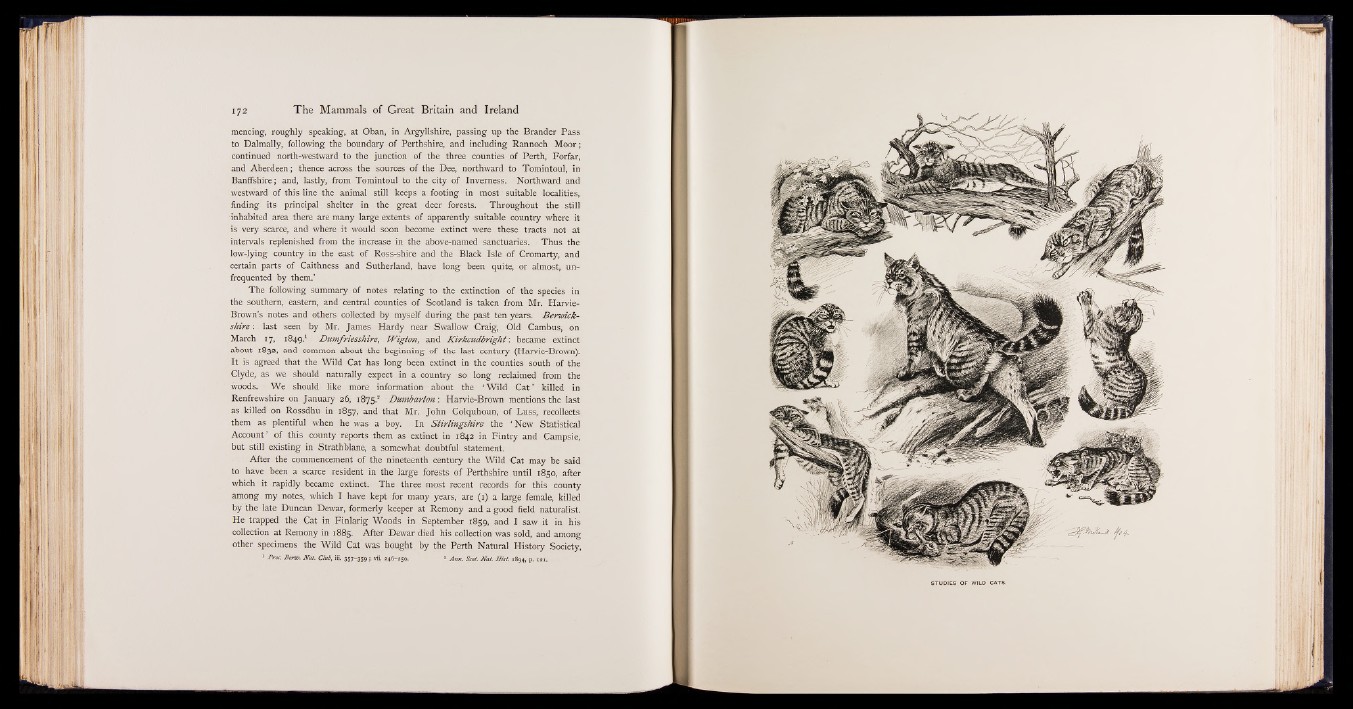
mencing, roughly speaking, at Oban, in Argyllshire, passing up the Brander Pass
to Dalmally, following the boundary of Perthshire, and including Rannoch Moor;
continued north-westward to the junction of the three counties of Perth, Forfar,
and Aberdeen; thence across the sources of the Dee, northward to Tomintoul, in
Banffshire; and, lastly, from Tomintoul to the city of Inverness. Northward and
westward of this line the animal still keeps a footing in most suitable localities,
finding, its principal shelter in the great deer forests. Throughout the still
inhabited area there are many large extents of apparently suitable country where it
is very scarce, and where it would soon become extinct were these tracts not at
intervals replenished from the increase in the above-named sanctuaries. Thus the
low-lying country in the east of Ross-shire and the Black Isle of Cromarty, and
certain parts of Caithness and Sutherland, have long been quite, or almost, unfrequented
by them.’
The following summary of notes relating to the extinction of the species in
the southern, eastern, and central counties of Scotland is taken from Mr. Harvie-
Brown’s notes and others collected by myself during the past ten years. Berwickshire
: last seen by Mr. James Hardy near Swallow Craig, Old Cambus, on
March 17, 1849.1 Dumfriesshire, IVigion, and Kirkcudbright: became extinct
about 1832, and common about the beginning of the last century (Harvie-Brown).
It is agreed that the Wild Cat has long been extinct in the counties south of the
Clyde, as we should naturally expect in a country so long reclaimed from the
woods. We should like more information about the ' Wild Cat ’ killed in
Renfrewshire on January 26, 1875.2 Dumbarton; Harvie-Brown mentions the last
as killed on Rossdhu in 1857, and that Mr. John Colquhoun, of Luss, recollects
them as plentiful when he was a boy. In Stirlingshire the ‘ New Statistical
Account’ of this county reports them as extinct in 1842 in Fintry and Campsie,
but still existing in Strathblane, a somewhat doubtful statement.
After the commencement of the nineteenth century the Wild Cat may be said
to have been a scarce resident in the large forests of Perthshire until 1850, after
which it rapidly became extinct. The three most recent records for this county
among my notes, which I have kept for many years, are (1) a large female, killed
by the late Duncan Dewar, formerly keeper at Remony and a good field naturalist.
He trapped the Cat in Finlarig Woods in September 1859, and I saw it in his
collection at Remony in 1885. After Dewar died his collection was sold, and among
other specimens the Wild Cat was bought by the Perth Natural History Society,
1 Proc. Berm. Nat. Club, iii. 3 5 7 -3 5 9 vii. 246-250. * Ann. Scot. Nat. H ist. 1894, p. 121.